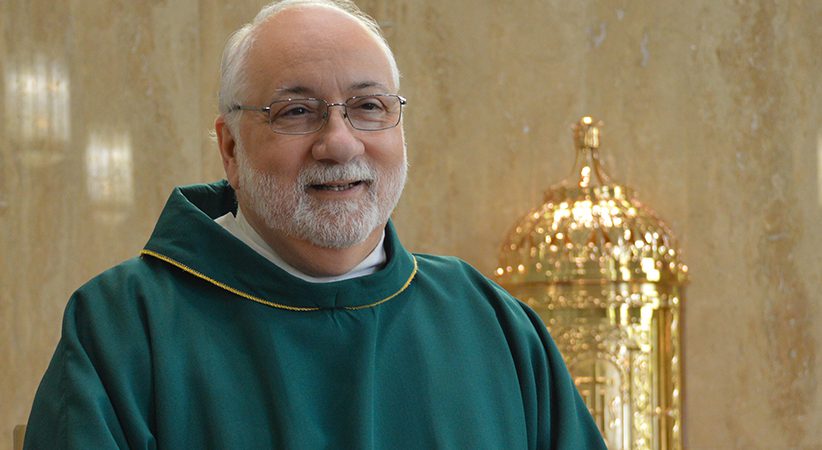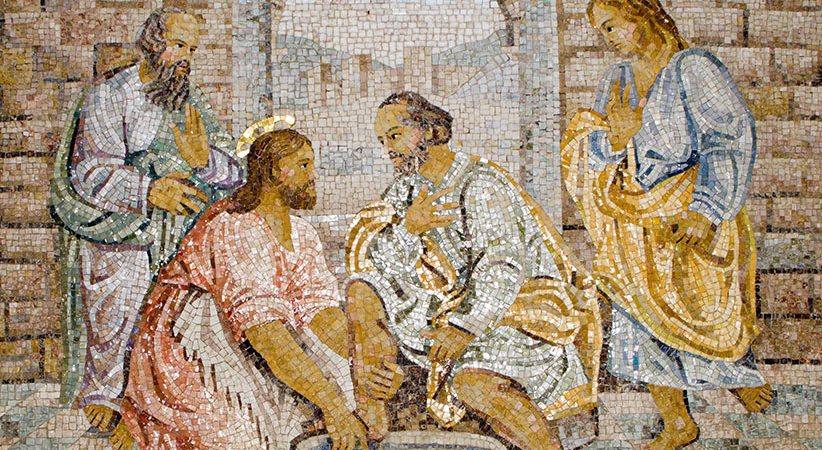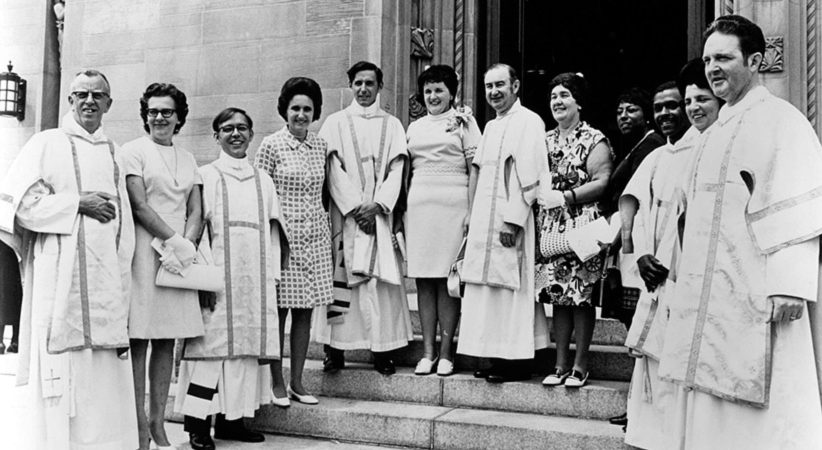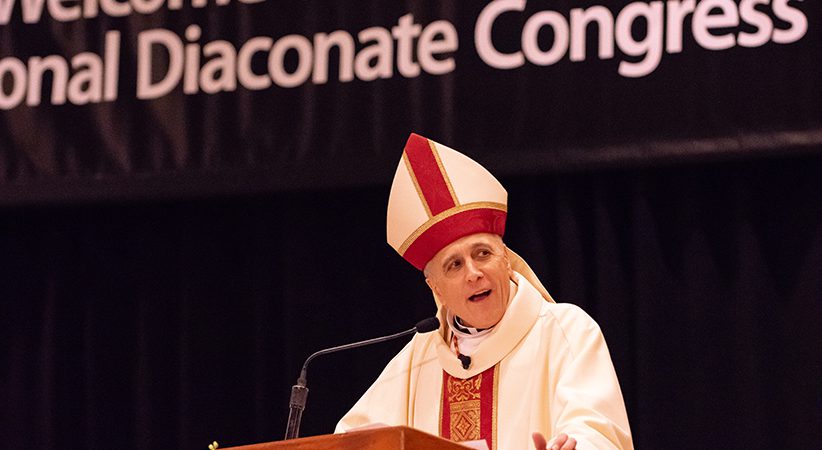Exploring NDICE
On a mission to provide continuing education for deacons
Deacon Gerald Bach Comments Off on Exploring NDICE
Since its rebirth at the Second Vatican Council, the diaconate has had a profound effect on the Church. The ministry composed of mostly married men has enhanced the liturgy, eased the pressure demanded of the priest, improved communication between the lay faithful and the clergy and helped educate the parish on matters of service to others and prayer by filling the roles of mentor, a welcoming ear and a true servant of the people of the Church.
The deacon, “servant,” is an ordained assistant to priests responsible for such ministerial duties as preaching, baptizing, witnessing marriages, distributing Communion, preaching and, at times, presiding at funerals. The deacon often has many duties in the parish away from the altar. These include the training of servers and other liturgical ministers; sacramental preparation classes for marriage and baptism; sometimes running the RCIA program or teaching the parish school religion classes.
All of this service didn’t happen by accident. The diaconate formation programs have, for the most part, over the years, improved by leaps and bounds. The National Directory for the Life of Permanent Deacons requires continuing education for deacons. Since 1975, no organization has filled that role better than the National Diaconate Institute for Continuing Education, NDICE for short. The sole mission of NDICE is to promote the continuing education of deacons.
Tracing the History of NDICE
The very early history of NDICE can be traced to a meeting held Aug. 3, 1975, in the office of Benedictine Father Kieran Nolan, OSB, at St. John’s University, in Collegeville, Minnesota. The meeting’s discussion covered the need for permanent deacons to come together on a national level for the sharing of experiences and insights following ordination and for post-ordination formation. This is considered the first annual meeting of NDICE.
In the early years, the meetings were planned, executed and under the control of the U.S. bishops’ Committee on the Permanent Diaconate, a part of the United States Conference of Catholic Bishops (USCCB). Church leaders and theologians, as well as the deacons themselves, were busy defining what role this new ministry would look like on a permanent basis and how that would affect the life of the Church.
……………………………………………………………………………………………………………………………………………………….
Jim Alt’s Contributions
No brief history of the National Diaconate Institute of Continuing Education would be complete without the mention of Jim Alt. As many recall, Jim was the keeper of NDICE history, editor of the Deacon Digest and the NDICE Newsletter. This organization cannot thank Jim enough for his service to the deacon community. Please visit the NDICE webpage at NDICE.net for a complete history compiled by Jim Alt.
……………………………………………………………………………………………………………………………………………………….
In the August 1977 meeting, Msgr. Ernest (Bud) Fiedler, the executive director of the bishops’ Committee on the Permanent Diaconate, told the attendees what he considered the greatest concerns facing the permanent deacons on that day. They were: “Better relations between priests and deacons; the danger of deacons becoming liturgical functionaries; the problem of clericalism, with deacons as one of the steps in the authority structure.”
“The permanent diaconate has reached the stage of adolescence, and we should be astonished that we have grown so rapidly,” Msgr. Fiedler said.
He noted that “an alb and ribbon doesn’t make anybody,” in reference to the deacon’s liturgical garb. “You need to be recognized as a man of service, a living sign of the sacrament of service,” he said. He added that the liturgical ministry only takes on its proper aspect when the deacon is recognized for his service in the community.
Bishop Joseph Crowley, auxiliary bishop of the Diocese of Fort Wayne-South Bend, said in his welcoming remarks that year that he “cannot think of any group that is more important to the life of the Church today than this diaconate group.” He told attendees not to be discouraged: “It will take a long time before we of the Church find the role you are going to fulfill.”
Stressing the importance of permanent deacons in the Church, Msgr. John Egan, director of the Center for Pastoral and Social Concerns at the University of Notre Dame, said: “I don’t think there is a movement in the Church about which I am more proud. You are an important part of the structure of the new Church.” He said the deacons had come through, in spite of “hostility and apathy” from some of the clergy. “Men like yourselves will take on tough, ‘gutsy’ apostolates, which are reflected in the news of each day from every city.”
“The permanent diaconate did not come a moment too soon. Questions, which are presently unresolved, will be resolved by you,” Msgr. Egan said. “Maybe the Church is asking too much of you, to commit yourselves to a ministry of service with your family responsibilities.”
“The function of the deacon only exists in relation to the needs of the community,” Msgr. Egan stressed.
The Work Goes On
Those are wise words from the past that bear repeating now. There is no doubt we are still working through many of these areas yet today.
Throughout its history, NDICE has been blessed with fantastic speakers at the annual conferences — speakers who were leaders within the USCCB, the recognized experts in whatever fields which were being explored, religious educators and motivational speakers from industry, to name just a few. NDICE continues to be engaged in a never-ending quest to promote the continuing education of deacons and continually seeks out speakers who are recognized experts in their field.
In the past, attendees have heard from Matthew Kelly, an international speaker who has spoken to more than 4 million people in 50 countries and the founder of Dynamic Catholic, on a wide variety of topics seeking to engage Catholics in Catholicism; Deacon Greg Kandra, editor of the popular blog The Deacon’s Bench, on using the media to prepare more relevant homilies; and Deacon Bill Ditewig, a member of the secretariat on the bishops’ Committee on the Permanent Diaconate.
These talented speakers have covered topics germane to the ministry of the diaconate including the balancing of vocations, home vs. office vs. church, effective preaching, clericalism and, most recently, an in-depth study of Pope Francis’ apostolic exhortation Amoris Laetitia (“The Joy of Love”).
Conferences
In 2018, the organization returned to its roots and joined the National Deacon Directors at its meeting celebrating the golden anniversary of the reinstitution of the diaconate by the Second Vatican Council. The meeting in New Orleans, Louisiana, hosted more than 3,000 deacons and deacon families and was inspirational to those who attended.
The NDICE annual conference would not be complete without some levity. The Deacon Follies fills that bill. Each year, deacons and wives perform on stage, highlighting their talents to amuse and entertain. The acts run the gamut from stand-up comedy to guitar soloists. There has also been entertainment from nationally known composers and liturgists like John Michael Talbot and Carey Landry.
Last, but certainly not least, are our wives. They have a fully functioning committee with representation on the board of directors. They support the NDICE mission and are a valued part of our daily lives and our organization.
DEACON GERALD BACH has been a deacon of the Belleville diocese, in Illinois, since May 30, 2009, and is the managing editor of NDICE News. He has been married for 46 years to Ann. They have three grown children and six grandchildren.
…………………………………………………………………………………………………………………………………………………………….
More information
Visit https://ndice.net/ for history, conference information, officers, the NDICE newsletter and other relevant links.
……………………………………………………………………………………………………………………………………………………………..





